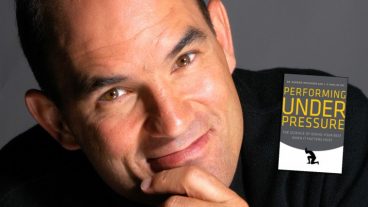Unwanted and even wanted change can often leave us confused and scrambling to figure out what to do next. In these times, it’s important to remember who you are and use it as a stabilizing force to adapt to your changing environment. Using the example of spiders learning to survive in zero gravity, Todd Hirsch, Chief Economist at ATB Financial, shows us how.
Her name was Esmerelda. While she wasn’t the most experienced NASA crew member at the International Space Station, she was one of the most talented as an engineer of some of the most intricate structures in the world. She was, in fact, a spider.
Esmeralda was one of a team of spiders brought up to the space station in 2011. She along with her comrades were the subject of a scientific experiment which sought to answer, what will a spider do in zero gravity? Will it attempt to build a web? Will it even be able to build a web? On earth, of course, gravity is an essential element in web building. Spiders use their own weight to lower themselves down on their silky threads, which creates tension in the web. So, what will they do without gravity?
When Esmerelda crawled out of her tiny tube and into a specially designed container, she was, as one would imagine, a bit confused. She was floating about weightlessly, a sensation she’d obviously never experienced before. It didn’t take too long for her to start doing what comes naturally to a hungry spider: build a web to trap some food. But, the traditional techniques of web building — which had worked flawlessly for 100 million years on earth — were no longer working. Rather than lowering herself down, Esmerelda drifted about aimlessly, her threads trailing uselessly behind her. It wasn’t looking good.
After a short period of lethargy and confusion, something remarkable happened. Esmeralda developed an entirely new technique of web building that didn’t require gravity. Rather than lowering herself down, she learned to propel herself off the side of the container and adjusted the thickness of the web. Rather than building the web from the inside out as she might have on earth, Esmerelda fashioned a back-and-forth movement, much like a windshield wiper. Before long, she had created an entirely new, workable web — in space! (And yes, the NASA astronauts had flies to feed her).
It was an astounding display of adaptation. If the spiders had been humans in this predicament, the first thing they would have done is form a committee! They would have tried to come up with solutions, and doubtless the only idea they would have come up with is to lobby the astronauts to bring them back to earth ASAP! When faced with sudden, unwanted change, that’s our human impulse: get things back to how they used to be.
The problem with this strategy is that getting back to “the good ol’ days” is rarely possible. You have to accept the new environment and adapt to it.
The lesson of the spiders in space goes even further. The spiders didn’t have to change who they were to adapt to their environment. They knew their story — they are trappers that spin web to catch their prey. They remained true to what they knew how to do (i.e., spin web), and successfully adapted their technique to meet the demands of their new environment.
The author of Spiders in Space: Successfully Adapting to Unwanted Change, Todd Hirsch speaks about the Canadian economy; adapting to change; and creativity, risk-taking, and embracing failure, all with his signature friendly and easy-to-understand style.
Interested in learning more about Todd and what he can bring to your next event? Email us at [email protected].




